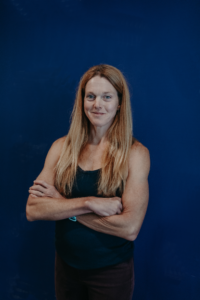The full paper can be found here.

Tell us more about yourself and the author team.
The three of us are all long-time female athletes; some of us have competed at the top levels of sport at the same time as pursuing our careers. Our common passion is empowering female athletes to understand their bodies, their training, and how the usual sport science methodologies and protocols are generalized from male data, thus not completely applicable to female physiology. We know that sex differences exist from birth and that at the onset of puberty, with the epigenetic exposure to female sex hormones, significant changes occur that affect all female body systems. This critical point is often ignored in biomedical research, and we are part of a growing collective of female research scientists out to rectify this through female-specific research.
What is the story behind your study?
We came together on this specific paper due to the large data set that would allow us to investigate recovery, sleep, and training stress markers across three primary hormone profiles of female athletes: Natural Cycle, Combined Oral Contraceptive (COC), and Progestin-only contraceptive. Most research is conducted in the natural cycle’s low hormone (follicular phase) or on women who have a stable hormone profile using the COC; neither is a complete representation of female physiology. With the ability to look across all phases and different contraceptives, we aimed to have a more complete picture of the adaptation and recovery of the autonomic nervous system.
In your own words, what did you find?
We found that if a woman was naturally cycling, there was greater recovery and ability to take on more stress in the follicular vs luteal phase. This pattern was similar in women on the progestin-only pill, except for the last few days of the cycle, where there was better recovery than the naturally cycling late luteal phase. Interestingly, with the combined OC, recovery was better. The ability to take on strain was higher in the first 4 days of the active pill and the last 4 days of the placebo pill, with incremental attenuated recovery for each additional week on the active pill. These differences significantly impact the ability to adapt to training stress, of which coaches and other allied sports scientists should be aware.
What was the main challenge you faced in your study?
The main challenge was more of a limitation – the distance between New Zealand and Boston made for some time challenges for discussions. Still, in all seriousness, the biggest challenge was using algorithms to try to correctly identify menstrual cycle phases without blood test confirmations.
If there is one take-home message from your study, what would that be?
Understanding the hormone profile of the female athlete can significantly influence training and adaptation. Sports scientists rely heavily on heart rate variability (HRV) as a marker for recovery, knowing that HRV is affected differently depending on if the woman is naturally cycling, using a COC or a progestin-only pill can allow better training protocols to be implemented; furthering the potential of the female athlete.